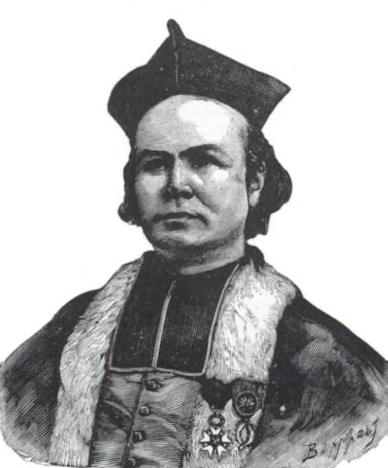Ulysse Chevalier on:
[Wikipedia]
[Google]
[Amazon]
 Ulysse Chevalier (24 February 1841 – 27 October 1923) was a French bibliographer and
Ulysse Chevalier (24 February 1841 – 27 October 1923) was a French bibliographer and
 Ulysse Chevalier (24 February 1841 – 27 October 1923) was a French bibliographer and
Ulysse Chevalier (24 February 1841 – 27 October 1923) was a French bibliographer and historian
A historian is a person who studies and writes about the past and is regarded as an authority on it. Historians are concerned with the continuous, methodical narrative and research of past events as relating to the human race; as well as the st ...
.
Born in Rambouillet, he published many works on the history of Dauphiné
The Dauphiné (, ) is a former province in Southeastern France, whose area roughly corresponded to that of the present departments of Isère, Drôme and Hautes-Alpes. The Dauphiné was originally the Dauphiné of Viennois.
In the 12th centu ...
, e.g. the cartularies of the church and the town of Die (1868), of the abbey of Saint André le-Bas at Vienne
Vienne (; Poitevin-Saintongeais: ''Viéne'') is a landlocked department in the French region of Nouvelle-Aquitaine. It takes its name from the river Vienne. It had a population of 438,435 in 2019.diocese of Vienne (1889), of the abbey of Saint Chaifre at Le Monestier (1884), the inventories and several collections of archives of the dauphins of Viennais, and a ''Bibliothèque liturgique'' in six volumes (1893–1897), the third and fourth volumes of which constitute the ''Repertorium hymnologicum'', containing more than 20,000 articles.
Chevalier's principal work is the ''Répertoire des sources historiques du moyen âge''. The first part, ''Bio-bibliographie'' (1875–1886), contains the names of all the historical personages alive between the years 1 and 1500 who are mentioned in printed books, together with precise references. The second part, ''Topo-bibliographie'' (1894–1903), contains not only the names of places mentioned in books on the history of the
/ref> In ''Notre Dame de Lorette. Étude critique sur l’authenticité de la Santa Casa'' (1906), he built his analysis on false documents, produced in the 19th century, to argue that the miraculous translation of the Santa Casa (the Holy House) was a legend.
Middle Ages
In the history of Europe, the Middle Ages or medieval period lasted approximately from the late 5th to the late 15th centuries, similar to the post-classical period of global history. It began with the fall of the Western Roman Empire ...
, but, in a general way, everything not included in the ''Bio-bibliographie''.
The ''Répertoire'' as a whole is a mass of useful information, and is one of the most important bibliographical monuments ever devoted to the study of medieval history. Though a Catholic priest and professor of history at the Catholic
The Catholic Church, also known as the Roman Catholic Church, is the largest Christian church, with 1.3 billion baptized Catholics worldwide . It is among the world's oldest and largest international institutions, and has played a ...
university of Lyon
Lyon,, ; Occitan language, Occitan: ''Lion'', hist. ''Lionés'' also spelled in English as Lyons, is the List of communes in France with over 20,000 inhabitants, third-largest city and Urban area (France), second-largest metropolitan area of F ...
, the Abbé (afterwards Canon) Chevalier maintained an independent critical attitude even on religious questions. In the controversy on the authenticity of the Shroud of Turin (''sudario''), he worked by tracing back the history of the cloth, which was undoubtedly used as a shroud, but he argued was not produced before the 14th century and was probably no older (''Le Saint Suaire de Lirey-Chambéry, Turin et les défenseurs de son authenticité''). In 2006 French historian Emmanuel Poulle wrote in a peer-reviewed journal that Ulysse Chevalier showed in this case intellectual dishonesty. According to Poulle, Chevalier deliberately did not correctly mention the Papal bulls of antipope Clement VII
Pope Clement VII ( la, Clemens VII; it, Clemente VII; born Giulio de' Medici; 26 May 1478 – 25 September 1534) was head of the Catholic Church and ruler of the Papal States from 19 November 1523 to his death on 25 September 1534. Deemed "the ...
issued in 1390. In fact Clement VII never opted for the forgery thesis. Emmanuel Poulle, « Le linceul de Turin victime d'Ulysse Chevalier », ''Revue d'histoire de l'Eglise de France'', 2006, vol. 92, n° 229, p. 343-35/ref> In ''Notre Dame de Lorette. Étude critique sur l’authenticité de la Santa Casa'' (1906), he built his analysis on false documents, produced in the 19th century, to argue that the miraculous translation of the Santa Casa (the Holy House) was a legend.
References
External links
* * {{DEFAULTSORT:Chevalier, Ulysse 1841 births 1923 deaths People from Rambouillet 19th-century French historians 20th-century French historians Members of the Académie des Inscriptions et Belles-Lettres French bibliographers Researchers of the Shroud of Turin French male writers